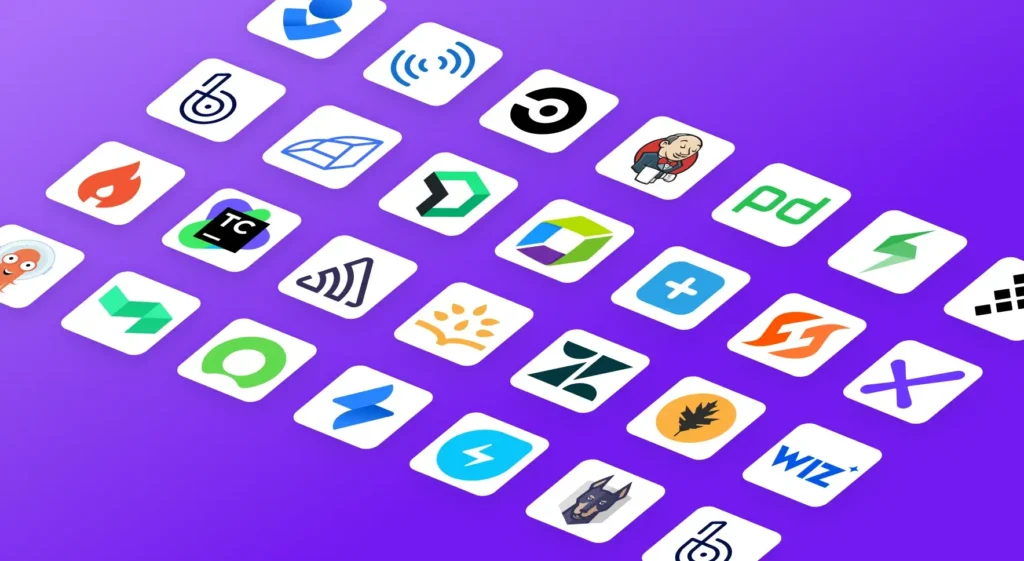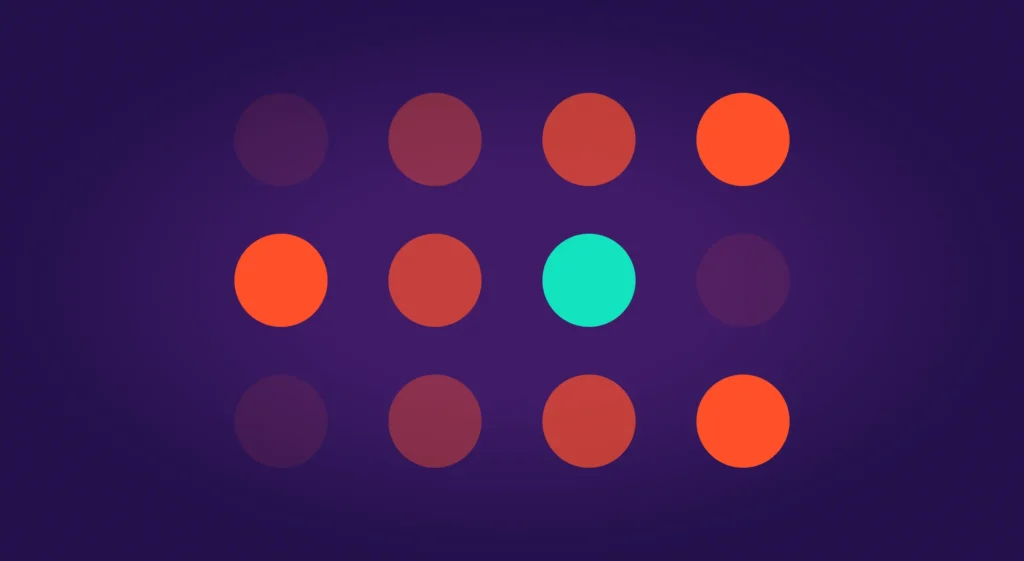Overly detailed product plans can sometimes stifle and slow the development process. On the other hand, providing no guidelines at all can cause teams to freewheel and fall out of alignment with overarching business goals.
The key to unlocking creativity and productivity is providing just enough guidance.
You can think of Agile roadmaps as “just enough” product roadmaps. They lay out the expected evolution of a product over time – without fixed timelines or detailed tasks – so developer teams can focus, pivot as needed, and stay aligned with stakeholders.
What Is an Agile Product Roadmap?
What Is an Agile Product Roadmap?
An Agile roadmap is a high-level strategic plan that outlines the intended direction, evolution, and major milestones for a product or project. Agile roadmaps embrace the flexibility and adaptability central to Agile methodologies, like Scrum, Kanban, or SAFe.
Traditional Product Roadmaps Versus Agile Roadmaps
Traditional, fixed roadmaps often can’t keep pace with today’s iterative, fast-moving software development. Whereas traditional roadmaps emphasize detailed tasks, predefined features, and fixed, linear timelines, an Agile roadmap focuses on:
- Outcomes over outputs: Agile roadmaps emphasize the goals and value to be delivered (e.g., “Increase user engagement”) rather than just listing new features.
- Flexibility: Agile roadmaps are designed to evolve based on customer feedback, business goals, and changing market conditions.
- Broad timeframes: Instead of predefined, precise dates for future items, Agile roadmaps use relative time horizons, like “Now,” “Next,” and “Later” or estimates like small, medium, and large (which may equate to some number of sprints) to accommodate for uncertainty and priority shifts.
- Communication and alignment: Teams can use Agile roadmaps to communicate the product vision and strategy with stakeholders, including software development teams, product owners, management, and customers.
When Do Engineering Teams Need an Agile Roadmap?
When Do Engineering Teams Need an Agile Roadmap?
When should you use an Agile roadmap? They can be helpful basically anytime you need to make sure work proceeds in a strategic direction while accounting for shifts, new priorities, evolving customer needs, and other changes that you can’t plan for.
For example, Agile roadmaps can be a great north star in the following situations:
- When working on new products, significant features, or major releases: Agile roadmaps serve as a shared source of truth, aligning the engineering team with product management, design, marketing, and other stakeholders on the intended direction and scope and reducing the risk of building new features that don’t meet strategic needs.
- When you’re concerned about resources, scope, or dependencies: Roadmaps give visibility into larger chunks of upcoming work so you can understand dependencies between different features or components and participate in discussions about feasibility, scope, and resource allocation.
- When you want to promote better cross-functional collaboration: Roadmaps help coordinate efforts across engineering, product, and other teams, reducing bottlenecks and miscommunication. Plus, when engineers provide feedback on the roadmap (especially regarding feasibility), it fosters a sense of ownership and encourages better collaboration with product managers.
Different Types of Agile Roadmaps
Different Types of Agile Roadmaps
Different teams work differently. Which just means that the type of Agile roadmap that works at one organization might not be as effective at another. Here are different types of Agile roadmaps you might consider depending on your team structure, planning needs, and organizational goals.
Time-Based Agile Roadmap
A time-based Agile roadmap organizes work according to calendar periods like months or quarters. Often, it leverages a visual timeline to plot out initiatives or features. Its main purpose is to communicate when to expect certain milestones or value delivery.
This type of roadmap can be especially helpful for coordinating with external teams or stakeholders who rely on schedules. However, to remain agile, it must stay flexible (especially the further it goes into the future) and be updated based on actual progress and new discoveries, both technical and customer-oriented.
Progress-Based Agile Roadmap
A progress-based Agile roadmap focuses on the status of work items within a workflow, often using columns like “Next Up,” “In Progress,” and “Done,” similar to a Kanban board. It emphasizes current priorities rather than specific delivery dates.
This type of roadmap is highly flexible and clearly shows what the team is actively working on. However, it offers even less predictability about completion dates for items not yet started.
Strategic Agile Roadmap
Strategic Agile roadmaps are high-level, connecting work directly to overarching business goals and strategic objectives. They’re often organized by strategic goals or company OKRs, and might visually link these goals to major initiatives or themes planned over broad timeframes (like quarters or halves of the year).
This type of Agile roadmap answers the “Why?” behind the work and is best for leadership, stakeholders, and cross-functional teams to align on strategic direction.
Epics Agile Roadmap
This style outlines the sequence and timing of major bodies of work (Epics) needed to deliver significant value or to achieve parts of a strategic initiative. Often uses swimlanes for strategic initiatives or product areas, plotting Epics along a timeline (Sprints, Quarters, or Now/Next/Later).
Epics Agile roadmaps answer, “What large pieces are we building?” and are useful for product owners, engineering leads, and program managers to understand the flow of major deliverables and dependencies.
Now, Next, Later Agile Roadmap
The core of this Agile plan is prioritization and flexibility. It indicates the sequence of work without committing to precise dates far in the future. Typically, it uses three distinct columns or time horizons (e.g., now, next, later). Items move from right to left as they increase in priority and definition.
This roadmap answers “What is the priority order?” and is an excellent choice for communicating priorities clearly to the entire team and stakeholders while managing expectations about future commitments. Jellyfish’s Capacity Planner allows dragging and dropping work in the list to make it easier to show that prioritization.
6 Steps to Build an Agile Roadmap
6 Steps to Build an Agile Roadmap
Your Agile roadmap should be used as a living guide rather than a fixed plan. Here’s how you can build an Agile roadmap for your team’s next project.
1. Define the Vision and Strategic Goals
Like any strategic planning, you need to start by getting clarity on the why. Revisit the overarching product vision – the long-term aspiration for the product – to make sure it connects directly to business value and guides the entire process. Also, make sure you know which metrics or key performance indicators (KPIs) you’ll need to track to measure success toward product goals.
2. Gather Insights and Understand the Context
Before you dive into planning, engage with customers, internal team members, and other stakeholders through interviews, feedback sessions, and data analysis to make sure you understand the big picture of the problems to solve and opportunities to seize. Consider supplementing interviews with market research and competitive analysis.
3. Identify and Frame Key Themes
Next, translate your strategic goals and gathered insights into broad themes or initiatives. Instead of jumping to a list of features, focus on the core problems to solve or significant areas of value to deliver (e.g., “improve user onboarding,” “enhance mobile performance,” “streamline checkout process”). These themes provide the underlying structure for the roadmap.
4. Prioritize Themes Ruthlessly
Most likely, you can’t tackle everything at once. Evaluate and rank the identified themes based on their alignment with strategic goals, potential value/impact, estimated effort, risks, and dependencies. Use objective prioritization frameworks (RICE, Value vs. Effort, etc.) to make informed decisions about which themes offer the most strategic value now versus later.
5. Build the Roadmap
Once you have your themes, it’s time to construct the actual roadmap document or visual. Choose a format that best communicates the strategy and priorities for your audience (e.g., Now-Next-Later, theme-based swimlanes). Consider creating different views tailored to specific audiences – executives might need a high-level strategic overview, while the development team might need more context on near-term epics.
6. Collaborate, Align, and Refine
Share the draft roadmap with key stakeholders, such as the product development team, leadership, marketing, sales, and support. Facilitate discussions to gather feedback, validate assumptions, identify missed dependencies or potential roadblocks, get buy-in, and ensure everyone is aligned.. Refine the roadmap based on this crucial input.
The most critical step is ongoing: Iterate. An Agile roadmap is not a one-time document set in stone. It’s a living artifact that must be regularly reviewed (e.g., quarterly or monthly) and updated based on progress, new learnings, customer feedback, and shifts in the market or strategy.
How Jellyfish Supports Agile Roadmap Planning
How Jellyfish Supports Agile Roadmap Planning
Jellyfish helps bridge the gap between product strategy and engineering execution by providing data-driven visibility into how work gets done.
By integrating with tools like Jira, Git, and CI/CD systems, Jellyfish shows how engineering resources are actually allocated – across roadmap initiatives, unplanned work, technical debt, and more – so leaders can assess alignment with strategic goals.
With insights into historical investment, throughput, and cycle times, Jellyfish also improves predictability and equips teams to have data-driven roadmap planning conversations, not just gut checks.
Jellyfish turns engineering data into strategic clarity—supporting more informed planning, better alignment, and more predictable delivery. Ready to see how Jellyfish can improve your Agile roadmap planning process? Give a demo a try.
FAQs
FAQs
How often should you update an Agile roadmap?
An Agile roadmap is a living document, not a static plan set in stone. Updates should reflect new learnings, completed work, priority shifts, and market changes.
Many Agile teams find a quarterly review and update cycle effective for reassessing strategic themes and medium-term priorities. You might review near-term items (“Now” and “Next”) more frequently, perhaps monthly or with sprint reviews, to reflect tactical progress and adjustments.
Significant events should also trigger a review and potential update, such as major strategic shifts, critical customer feedback, competitor actions, or the completion of a large initiative.
What tools are best for creating an Agile roadmap?
Consider using tools that facilitate easy updates, clear visualization for your audience, and collaboration among your team and stakeholders. These might include:
- Dedicated roadmap planning tools: Tools like Aha!, Productboard, or Roadmunk are specifically designed for roadmapping, often offering advanced features for strategic alignment, prioritization, and stakeholder
- Project management tools: Platforms like Jira and Asana often include roadmap views, allowing you to link product strategy directly to execution tasks.
- Digital whiteboards: These tools are excellent for collaborative planning sessions and offer high flexibility in visualizing roadmaps in various formats.
- Basic tools: For simpler needs, tools like Trello (for Kanban-style roadmaps), spreadsheets, or even presentation software can be used, though they may require more manual effort to maintain.
Can an Agile roadmap have deadlines?
While Agile roadmaps prioritize flexibility, outcomes, and broad time horizons (like Now/Next/Later or quarters) over fixed dates, deadlines aren’t strictly forbidden.
Here’s where they might appear:
- Near-term clarity: Specific target dates or sprint targets might be used for items in the “Now” or immediate “Next” timeframe, where confidence is high.
- Market commitments/events: Sometimes external factors dictate a deadline (e.g., a conference launch, seasonal promotion, regulatory compliance date).
- Release coordination: A specific release date might be set to coordinate efforts across teams (like marketing and sales).
Avoid assigning hard deadlines to items far in the future, as this contradicts the Agile principle of adapting to change and acknowledging uncertainty. If deadlines are necessary, they should be clearly justified, communicated, and ideally still allow flexibility in how the goal is met by that date.
About the author

Marilyn is an Engineering Manager at Jellyfish. Her specialities include communicating, programming, researching, working well with others and with the command line, leading, being independently motivated to learn and to create.
She primarily works in Java, JS (mostly React/Redux, some NodeJS, MongoDB, and Angular), and python, with previous experience in PHP, Haskell, C, Perl, and Ruby. Diverse interests along the full stack have led to a plethora of other familiarities, including git, AWS (mostly ECS, S3, RDS, Dynamo, and Cost Explorer), Jenkins, TravisCI, PostgreSQL, Spring, mvn, svn, MySQL, XML, XSLT, CSS, sed, yacc, x86 assembly, and many other acronyms.





